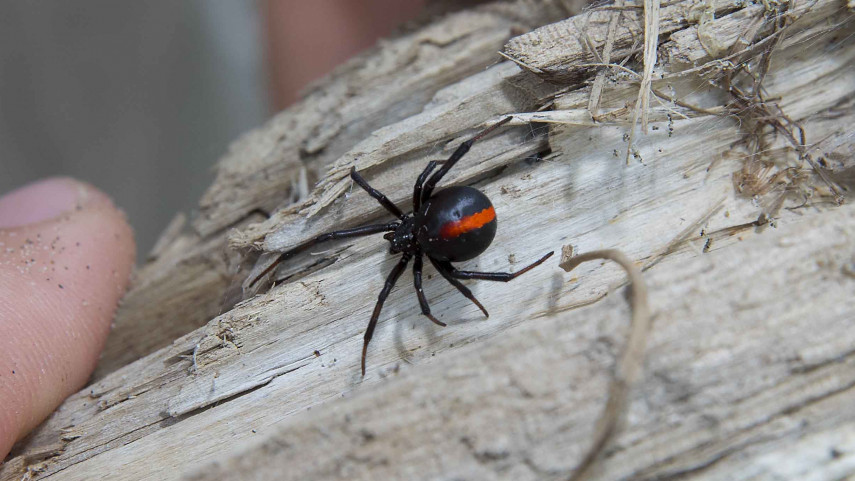
Coastal rangers weave rescue plan for katipo

Share this story
Moves are under way to make the katipo spider feel right at home in Pegasus Bay.
Members of the Christchurch City Council’s Parks team plan to restore the natural habitat of the katipo to help stem the declining number of the native spiders.
Entomologist Blair Balsom and fellow coastal park rangers Jason Roberts and Alice Waterhouse are combing the area for signs of the endangered spider and placing artificial covers to help track numbers.

Entomologist Blair Balsom hopes to lift katipo spider numbers in Pegasus Bay.
“We want to ascertain the katipo spider presence – and absence – along Pegasus Bay, and determine the best areas for improving the katipo habitat through restoration,” Mr Balsom says.
“We plan to plant more native grass species, such as spinifex, to encourage population growth.”
Mr Roberts explains that these plants are more suitable than the “predominant, introduced marram grass that covers most of the sand dunes along Pegasus Bay”.
A mutual interest in dune conservation – coupled with Mr Balsom’s research into the katipo – led to the trio’s spider project.
“Latrodectus katipo have absolute protection,” Mr Balsom says.
“The population has declined throughout New Zealand because of habitat loss and introduced species such as the false katipo (Steatoda capensis).
“We aim to standardise annual population monitoring and collect more data to help boost katipo numbers.”
A katipo colony at the Waimakariri River mouth will also be monitored.
Mr Roberts says enlarging a suitable katipo habitat will, hopefully, lift the population and aid the overall biodiversity of the sand dune system.
“We want to share our knowledge so that local residents can help protect this endangered species and support sand dune biodiversity,” he says.
“Members of the public visiting the beach shouldn’t be too concerned about being harmed by the spiders as they like to be well covered by vegetation, and reports of bites are rare.”
Mr Balsom’s previous research includes determining the effects of temperature on katipo development; the effects of herbicide on activity and a study into the hybridisation between the katipo and the redback (Latrodectus hasselti).
“The katipo is an iconic species, but few people are aware of its presence,” he says.
“It’s our only native venomous species and the population has dropped dramatically. It’s vital that we protect and nurture the precious number we have left.”
